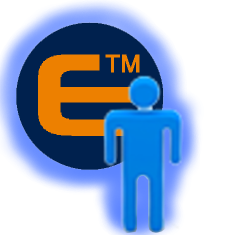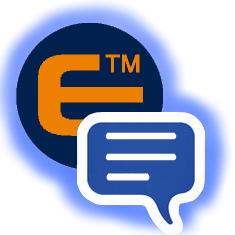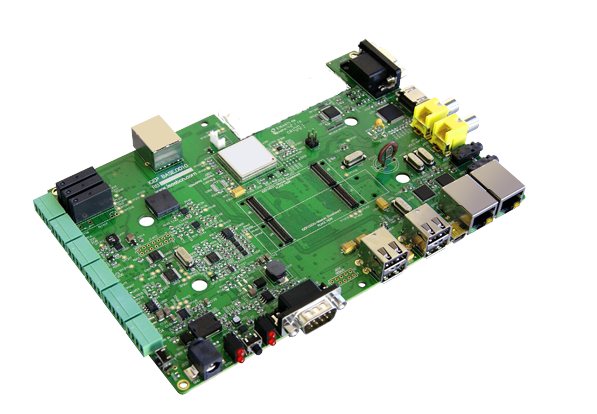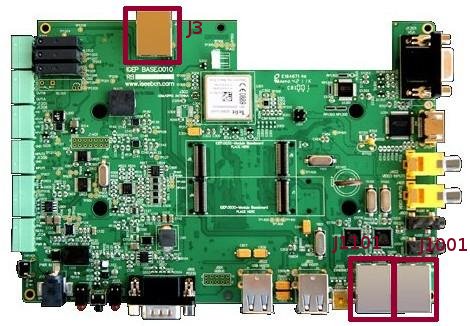|
|
| Line 32: |
Line 32: |
| | | | |
| | = Getting started = | | = Getting started = |
| − | == TFT and Touchscreen ==
| |
| − | '''Basic'''
| |
| − | [[Image:berlin_paris_screen_connectors.JPG|right|200px]] IGEP BERLIN Expansion supports SEIKO 7” LCD screen. Use J200, J203 and J204 connectors to attach screen. See image for more details.<br>
| |
| − |
| |
| − | '''Know more'''<br>
| |
| − |
| |
| − | IGEP BERLIN Expansion integrates LCD backlight driver (TPS61081) and touch screen controller (TSC2046), a 4-wire touch screen controller which supports a low voltage I/O interface from 1.5V to 5.25V.<br><br><br><br>
| |
| − |
| |
| − | == Serial port ==
| |
| − | '''Basic''' [[Image:Berlin db9.png|right|200px]]
| |
| − |
| |
| − | IGEP BERLIN Expansion integrates a DB9 RS232 connector.<br>
| |
| − |
| |
| − | '''Know more'''
| |
| − |
| |
| − | This peripheral (UART 3) can be used to debug system using kernel traces, getting a remote prompt, etc. <br> <br> <br>
| |
| − |
| |
| | == Ethernet Network cable == | | == Ethernet Network cable == |
| | ''' Basic ''' [[Image:Berlin ethernet.jpg|right|200px]] | | ''' Basic ''' [[Image:Berlin ethernet.jpg|right|200px]] |
| | | | |
| | Plug an Ethernet cable between IGEP BERLIN and your client machine (or any other network device with Ethernet connectivity). Use J3 connector with IGEP PROTON and J1001 connector with IGEP MODULE. | | Plug an Ethernet cable between IGEP BERLIN and your client machine (or any other network device with Ethernet connectivity). Use J3 connector with IGEP PROTON and J1001 connector with IGEP MODULE. |
| − |
| |
| − |
| |
| − | ''' Know more '''
| |
| − |
| |
| − | IGEP BERLIN comes with three 10/100BASE-TX Ethernet ports.
| |
| − |
| |
| − | In the following chapters we will use Ethernet to access IGEP PARIS.
| |
| − |
| |
| − | == USB devices ==
| |
| − | ''' Basic ''' [[Image:Berlin usbs.png|right|200px]]
| |
| − |
| |
| − | Plug an USB keyboard and USB mouse to the USB HOST ports.
| |
| − |
| |
| − |
| |
| − | ''' Know more '''
| |
| − |
| |
| − | Only USB 2.0 devices will work in IGEP BERLIN, so if you connect any USB mouse 1.0 into the USB host connector without using a USB hub 2.0, it will not work.
| |
| − |
| |
| − | == Composite Video Decoder ==
| |
| − | {{Message/Information Message|title=|message=IGEP COM MODULE AND IGEP BERLIN doesn't support video decoder}}
| |
| − | '''Basic'''
| |
| − | [[Image:Berlin rca.jpg|right|200px]]IGEP BERLIN Expansion integrates two composite video connectors to decode analog input signal. Plug some peripheral with video composite output.<br>
| |
| − |
| |
| − | '''Know more'''
| |
| − |
| |
| − | Analog input is decoded by TVP5151.<br><br><br><br><br>
| |
| − |
| |
| − | == GSM/GPRS modem ==
| |
| − | '''Basic'''
| |
| − |
| |
| − | {| align="right" cellspacing="1" cellpadding="1" border="1" width="200"
| |
| − | |-
| |
| − | | [[Image:Berlin antenna.png|200px]]
| |
| − | | [[Image:Berlin simcard.png|right|200px]]
| |
| − | |-
| |
| − | | GSM-GPRS antenna (highly recommended)
| |
| − | | SIM card reader
| |
| − | |}
| |
| − |
| |
| − | IGEP BERLIN Expansion integrates a GSM/GPRS modem to make phone calls or to send SMS or to write and read data from it, etc.<br>
| |
| − |
| |
| − | '''Know more'''
| |
| − |
| |
| − | Modem chip Telit GE865 is a small GSM/GPRS Ball-Grid-Array BGA module with next main features:
| |
| − |
| |
| − | *Quad-band EGSM 850 / 900 / 1800 / 1900 MHz
| |
| − | *Power consumption (typical values)
| |
| − |
| |
| − | - Power off: ‹ 62 uA<br> - Idle (registered, power saving): 1.6 mA @ DRX=9 <br> <br> <br>
| |
| − |
| |
| − | == CAN bus ==
| |
| − |
| |
| − | '''Basic'''
| |
| − |
| |
| − | [[Image:Berlin can.png|right|200px]]IGEP BERLIN Expansion integrates a CAN peripheral. Connect any CAN bus device or network to the CAN bus connector (J901).<br>
| |
| − |
| |
| − | '''Know more'''
| |
| − |
| |
| − | This output is controled by MICROCHIP MCP2515. J901 is a 3.5 mm pitch terminal blocks 5 Positions:
| |
| − |
| |
| − | {| cellspacing="1" cellpadding="1" width="350" border="1"
| |
| − | |-
| |
| − | | Signal Name
| |
| − | | Pin #<br>
| |
| − | | Description
| |
| − | |-
| |
| − | | CANH
| |
| − | | J901:1
| |
| − | | CAN High-Level Voltage I/O
| |
| − | |-
| |
| − | | CANL
| |
| − | | J901:2
| |
| − | | CAN Low-Level Voltage I/O
| |
| − | |-
| |
| − | | GND
| |
| − | | J901:3
| |
| − | | Ground
| |
| − | |}
| |
| − |
| |
| − | == DVI monitor ==
| |
| − |
| |
| − | ''' Basic '''
| |
| − | [[Image:Berlin hdmi.png|right|200px]]
| |
| − | IGEP BERLIN has a '''HDMI connector''' with a '''DVI-D interface'''
| |
| − |
| |
| − | Connect IGEP BERLIN to a DVI-D compatible monitor.
| |
| − |
| |
| − |
| |
| − | ''' Know more '''
| |
| − |
| |
| − | The Digital Visual Interface (DVI) is a video standard interface designed to provide very high visual quality on digital display devices such as flat panel LCD computer displays and digital projectors. It is partially compatible with the High-Definition Multimedia Interface (HDMI) standard in digital mode (DVI-D), and VGA in analog mode (DVI-A).
| |
| − |
| |
| − | Note that your monitor should be able to support 1024 x 768 @ 60 Hz, which is the default resolution in the preinstalled software.
| |
| − |
| |
| − | == VGA monitor ==
| |
| − | [[Image:Berlin vga.png|right|200px]]
| |
| − | '''Basic'''
| |
| − |
| |
| − | IGEP BERLIN Expansion integrates a VGA connector, the output VGA signal is equal to HDMI connector.
| |
| − |
| |
| − | '''Know more'''
| |
| − |
| |
| − | This output is controled by ADV7125KSTZ140 Integrated Circuit.
| |
| − |
| |
| − | <br> <br> <br><br> <br>
| |
| − |
| |
| − | == Battery ==
| |
| − | [[Image:Berlin battery.png|right|200px]]
| |
| − | J102 is a 2.5mm pitch, can be used to connect a 3,7V battery to power the base board.<br><br><br><br><br><br>
| |
| | | | |
| | == Connect IGEP BERLIN Expansion with IGEP COM MODULE/NEUTRON Board == | | == Connect IGEP BERLIN Expansion with IGEP COM MODULE/NEUTRON Board == |
| Line 170: |
Line 44: |
| | [[Image:BERLIN+proton.JPG|right|200px]] | | [[Image:BERLIN+proton.JPG|right|200px]] |
| | The IGEP BERLIN Expansion connects to the IGEP COM PROTON Board through J1, J4, J9 and J8 connectors. Just take a look on the figure below to mount it:<br> <br><br><br><br><br><br> | | The IGEP BERLIN Expansion connects to the IGEP COM PROTON Board through J1, J4, J9 and J8 connectors. Just take a look on the figure below to mount it:<br> <br><br><br><br><br><br> |
| − |
| |
| − | == Power up IGEP BERLIN Expansion ==
| |
| − | [[Image:Paris berlin connector.png|right|200px]]
| |
| − | Once you have connected the peripherals '''you can apply power''' to your IGEP BERLIN with 5V DC power supply (J101) with a minimum of 3A current capacity. Press SW101 button (between LEDs) to power up system.<br><br><br><br><br><br><br><br>
| |
| − |
| |
| − | == Test the Demo software distribution with touch screen ==
| |
| − |
| |
| − | ''' Basic '''
| |
| − |
| |
| − | When IGEP BERLIN powers up, the desktop of the preinstalled software will appear on the touch screen.
| |
| − |
| |
| − | You can use your fingers or a mouse and a keyboard to test the demo applications.
| |
| − |
| |
| − | [[Image:Poky-screenshot.png|thumb|500px|center|Screenshot of the Desktop of the pre-installed software]]
| |
| − |
| |
| − |
| |
| − | ''' Know more '''
| |
| − |
| |
| − | All IGEP Processor Boards have a pre-installed software in its flash memory which consists of a '''minimal Linux-based distribution''' with a lite X Window System and GNOME Mobile based applications created with '''Poky Platform Builder'''.
| |
| − |
| |
| − | == Log into IGEP BERLIN Expansion via Ethernet interface ==
| |
| − |
| |
| − | {{Message/Information Message|title=|message=In non-Linux operating system, use [http://labs.isee.biz/index.php/IGEP_SDK_Virtual_Machine IGEP SDK Virtual Machine] to connect to IGEP COM MODULE via USB or read article [http://labs.isee.biz/index.php/Using_USB_ethernet_gadget_to_communicate "Using USB ethernet gadget to communicate"]}}
| |
| − |
| |
| − | In your Host Machine:
| |
| − |
| |
| − | Open a Terminal session and set the IP of the Ethernet interface in which IGEP is connected (for example eth0):
| |
| − |
| |
| − | *In the file /etc/network/interfaces, you should add:
| |
| − | <pre>iface eth0 inet dhcp
| |
| − | iface eth0:0 inet static
| |
| − | address 192.168.5.10
| |
| − | netmask 255.255.255.0</pre>
| |
| − | *Type in a terminal:
| |
| − | <pre>sudo ifup eth0:0</pre>
| |
| − | *Revise that:
| |
| − | <pre>jdoe@ubuntu ~ $ ifconfig
| |
| − | ...
| |
| − | eth0:0 Link encap:Ethernet HWaddr 08:00:27:ad:0c:ad
| |
| − | inet addr:192.168.5.10 Bcast:0.0.0.0 Mask:255.255.255.0
| |
| − | UP BROADCAST RUNNING MULTICAST MTU:1500 Metric:1
| |
| − | ...</pre>
| |
| − | *Connect to IGEP device
| |
| − |
| |
| − | jdoe@ubuntu ~ $ ssh root@192.168.5.1
| |
| − |
| |
| | | | |
| | {{Navigation/IGEP Technology Guides/Getting Started/Ending | | {{Navigation/IGEP Technology Guides/Getting Started/Ending |
| | |Next_Step={{#lst:Template:Links|IGEP_BERLIN_Community_Guides_2}} | | |Next_Step={{#lst:Template:Links|IGEP_BERLIN_Community_Guides_2}} |
| − | }}
| |
| − |
| |
| − | {{Table/IGEP Technology Devices
| |
| − | |Tech_Family={{#lst:Template:Links|IGEP_BERLIN_Tech_Family}}
| |
| − | |Tech_ID={{#lst:Template:Links|IGEP_BERLIN_Tech_ID}}
| |
| − | |Name={{#lst:Template:Links|IGEP_BERLIN_Name}}
| |
| − | |Image={{#lst:Template:Links|IGEP_BERLIN_Image}}
| |
| − | |ISEE_MainPage={{#lst:Template:Links|IGEP_BERLIN_ISEE_MainPage}}
| |
| − | |ISEE_Hardware={{#lst:Template:Links|IGEP_BERLIN_ISEE_Hardware}}
| |
| | }} | | }} |
| | | | |
| | [[Category:IGEP Technology Devices Guides]] | | [[Category:IGEP Technology Devices Guides]] |
This is the 1/3 chapter of IGEP BERLIN Expansion Tutorial Guide.
In this first chapter, we will learn how to connect some expansion peripherals.
Plug an Ethernet cable between IGEP BERLIN and your client machine (or any other network device with Ethernet connectivity). Use J3 connector with IGEP PROTON and J1001 connector with IGEP MODULE.
The IGEP BERLIN Expansion connects to the IGEP COM MODULE/NEUTRON Board through J1 and J4 connectors. Just take a look on the figure below to mount it:
The IGEP BERLIN Expansion connects to the IGEP COM PROTON Board through J1, J4, J9 and J8 connectors. Just take a look on the figure below to mount it:








